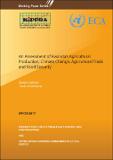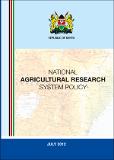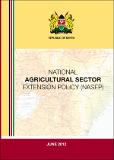| dc.description.abstract | Rwanda is a small, hilly, landlocked country located in Eastern and Central Africa region between Burundi, Uganda, Tanzania and the Democratic Republic of Congo (DRC). It is located 2° south of the Equator in Central Africa and covers a surface area of 26,338 square kilometers. Due to high altitude, the country experiences average annual temperatures ranging from 16° to 20°C. The climate is moderate and characterized by temperate conditions, especially in higher altitudes in the Northwest of the country. The topography is hilly to mountainous with altitude ranging from 950 to 2,500 meters above sea level. Rwanda has the highest population density in Africa. Moreover, the country is characterized by agro-ecological diversity, with 12 agro-ecological zones. The objective of this study is to assess the spatial effects of climate change on agricultural production, and food security in the East African Community region, especially in Rwanda. Agriculture is the backbone of Rwanda’s economy. It contributes 34 per cent of Gross Domestic Product (GDP). About 81 per cent of all households depend on agriculture, which employs around 70 per cent of the Rwandan population that lives in rural areas. Agricultural production is predominantly at a subsistence level because a large number of rural household’s farm plots are too small to support commercial production. The Government of Rwanda adopted the Crop Intensification Programme (CIP) in 2008 with a goal to increase agricultural productivity of high potential food crops and to provide Rwanda with greater food security. The implementation of this programme involves various components, including Land Use Consolidation (LUC ) as the main pillar, proximity advisory services to farmers, inputs (seeds and fertilizers) distribution, improving post-harvest technologies (e.g. driers and storage facilities) and access to extension services. The priority food crops in the programme include Irish potatoes, maize, wheat, rice, cassava, soybean and beans. | en |




